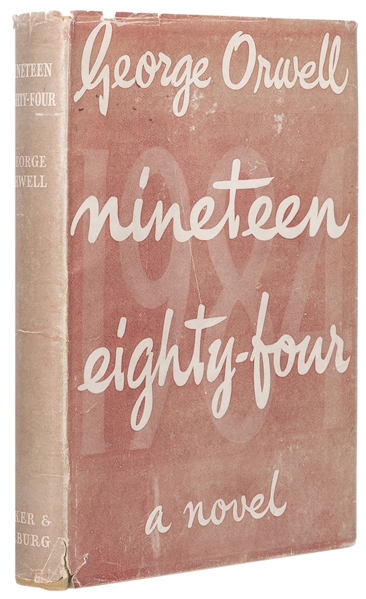[PAINE, Thomas (1737-1809).] Common Sense; addressed to the Inhabitants of America. [With:] Plain Truth: Addressed to the Inhabitants of America. Containing remarks on a late Pamphlet intitled Common Sense. London: J. Almon, 1776. [Bound after:] BURNEY, Charles. The Present State of Music in France and Italy. Becket, 1771. First English edition, mixed printing, a choice copy with the self-censored hiatuses filled in by manuscript. John Almon, the publisher of this copy and of all of the London 1776 printings of Common Sense, was no stranger to controversy and even prosecution. A passionate Whig himself, his Piccadilly bookshop was known as a critical center for the brokering and exchange of radical ideas. However, Paine’s bestseller must have felt a bridge too far. To avoid legal responsibility, Almon decided to remove the most provocative phrases and sentences from his edition of Common Sense. They appear instead as simple gaps in the print, or hiatuses. These gaps appear on a dozen different pages in all 1776 editions, with the earliest editions omitting an additional five words. This copy has nearly all of the hiatuses filled in by a neat, early hand. Reading them together, one can certainly comprehend Almon’s trepidation. They mostly relate to personal attacks on the King, calling him “the royal brute,” “the tyrant of Britain” who sleeps with “blood on his soul” and “has wickedly broken through every moral and human obligation…” and worse. The neatness of the manuscript leads one to suspect that it may have been issued thus, the avoidance of printing being a legal loophole. In any case, Common Sense was a runaway best-seller and hugely influential in England. Among other tidbits, it famously inspired John Laurens to quit law school and return home to join the Revolution. He became George Washington’s aide-de-camp and one of the most vocal abolitionists of the War. Interestingly, the present copy has a contemporary French binding. The first French edition of Common Sense was not published until 1791, towards the beginning of the French Revolution. In this copy, the Introduction and signature D correspond to Gimbel’s “second edition” and subsequent signatures to the third or fourth. Plain Truth is stated “Second Edition.” This copy corresponds to all points described in CS-39 except that “fire” is printed correctly on the first page of the Introduction, corresponding to earlier issues. Gimbel CS-39 & CS-211. Three works bound together. Octavo (196 x 117 mm). (Some toning, first two leaves of Common Sense toned, a few small marginal chips where clumsily opened.) Contemporary French calf-backed paste-paper boards, spine gilt, red morocco lettering piece (joints and spine ends chipped, rubbing to corners and spine bands). Provenance: Edmond de Coussemaker, 1805-1876, eminent musicologist (engraved bookplate, his sale, J. Olivier, 17 April 1877, lot 165).
[PAINE, Thomas (1737-1809).] Common Sense; addressed to the Inhabitants of America. [With:] Plain Truth: Addressed to the Inhabitants of America. Containing remarks on a late Pamphlet intitled Common Sense. London: J. Almon, 1776. [Bound after:] BURNEY, Charles. The Present State of Music in France and Italy. Becket, 1771. First English edition, mixed printing, a choice copy with the self-censored hiatuses filled in by manuscript. John Almon, the publisher of this copy and of all of the London 1776 printings of Common Sense, was no stranger to controversy and even prosecution. A passionate Whig himself, his Piccadilly bookshop was known as a critical center for the brokering and exchange of radical ideas. However, Paine’s bestseller must have felt a bridge too far. To avoid legal responsibility, Almon decided to remove the most provocative phrases and sentences from his edition of Common Sense. They appear instead as simple gaps in the print, or hiatuses. These gaps appear on a dozen different pages in all 1776 editions, with the earliest editions omitting an additional five words. This copy has nearly all of the hiatuses filled in by a neat, early hand. Reading them together, one can certainly comprehend Almon’s trepidation. They mostly relate to personal attacks on the King, calling him “the royal brute,” “the tyrant of Britain” who sleeps with “blood on his soul” and “has wickedly broken through every moral and human obligation…” and worse. The neatness of the manuscript leads one to suspect that it may have been issued thus, the avoidance of printing being a legal loophole. In any case, Common Sense was a runaway best-seller and hugely influential in England. Among other tidbits, it famously inspired John Laurens to quit law school and return home to join the Revolution. He became George Washington’s aide-de-camp and one of the most vocal abolitionists of the War. Interestingly, the present copy has a contemporary French binding. The first French edition of Common Sense was not published until 1791, towards the beginning of the French Revolution. In this copy, the Introduction and signature D correspond to Gimbel’s “second edition” and subsequent signatures to the third or fourth. Plain Truth is stated “Second Edition.” This copy corresponds to all points described in CS-39 except that “fire” is printed correctly on the first page of the Introduction, corresponding to earlier issues. Gimbel CS-39 & CS-211. Three works bound together. Octavo (196 x 117 mm). (Some toning, first two leaves of Common Sense toned, a few small marginal chips where clumsily opened.) Contemporary French calf-backed paste-paper boards, spine gilt, red morocco lettering piece (joints and spine ends chipped, rubbing to corners and spine bands). Provenance: Edmond de Coussemaker, 1805-1876, eminent musicologist (engraved bookplate, his sale, J. Olivier, 17 April 1877, lot 165).
.jpg)












.jpg)

Try LotSearch and its premium features for 7 days - without any costs!
Be notified automatically about new items in upcoming auctions.
Create an alert